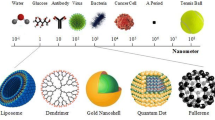Abstract
This study was conducted to examine the effects of copper on membrane potential and cytosolic free calcium in isolated primary chicken hepatocytes which were exposed to different concentration of Cu2+ (0, 10, 50, 100 μM) or a mixture of Cu2+ and vitamin C (50 and 50 μM, respectively). Viability, membrane potential, and cytosolic free Ca2+ of monolayer cultured hepatocytes were investigated at the indicated time point. Results showed that, among the different concentrations of Cu2+ exposure, the viability of hepatocytes treated with 100 μM Cu2+ was the worst at the 12th and 24th hours. The effects of Cu2+ on viability and proliferation were time and dose dependent. Further investigation indicated that Cu2+ exposure significantly enhanced cytosolic free Ca2+ in hepatocytes, compared to that in control group, at the 24th hour. Meanwhile, membrane potential was noticeably reduced in hepatocytes increasing concentration of Cu2+. Taking these results together, we have shown that Cu2+ can cause toxicity to primary chicken hepatocytes in excessive dose and the effect of Cu2+ exposure on membrane potential is not site specific, which is probably mediated by the changes of cytosolic free Ca2+.





Similar content being viewed by others
References
Britton RS (1996) Metal-induced hepatotoxicity. Semin Liver Dis 16:3–12
Gunther MR, Hanna PM, Mason RP, Cohen MS (1995) Hydroxyl radical formation from cuprous ion and hydrogen peroxide: a spin-trapping study. Arch Biochem Biophys 316:515–522
Sandmann G, Boger P (1980) Copper-mediated lipid peroxidation processes in photosynthetic membranes. Plant Physiol 66:797–800
Racay P, Kaplan P, Mezesova V, Lehotsky J (1997) Lipid peroxidation both inhibits Ca2+-ATPase and increases Ca2+ permeability of endoplasmic reticulum membrane. Biochem Mol Biol Int 41:647–655
Scheiber IF, Mercer JF, Dringen R (2010) Copper accumulation by cultured astrocytes. Neurochem Int 56:451–460
Russell NJ (1989) Adaptive modifications in membranes of halotolerant and halophilic microorganisms. J Bioenerg Biomembr 21:93–113
van de Vossenberg JL, Driessen AJ, Grant WD, Konings WN (1999) Lipid membranes from halophilic and alkali-halophilic archaea have a low H+ and Na+ permeability at high salt concentration. Extremophiles 3:253–257
Despa SI (1996) Membrane potential changes in activated cells: connection with cytosolic calcium oscillator. Biosystems 39:233–240
Su RS, Wang RM, Guo SN, Cao HB, Pan JQ, Li CM, Shi DY, Tang ZX (2011) In vitro effect of copper chloride exposure on reactive oxygen species generation and respiratory chain complexes activities of mitochondria isolated from broiler liver. Biol Trace Elem Res 9:39–43
Demidchik V, Sokolik A, Yurin V (2001) Characteristics of non-specific permeability and H+-ATPase inhibition induced in the plasma membrane of Nitella flexilis by excessive Cu2+. Planta 212:583–590
Ferioli A, Harvey C, De Matteis F (1984) Drug-induced accumulation of uroporphyrin in chicken hepatocyte cultures. Structural requirements for the effect and role of exogenous iron. Biochem J 224:769–777
Fujii M, Yoshino I, Suzuki M, Higuchi T, Mukai S, Aoki T, Fukunaga T, Sugimoto Y, Inoue Y, Kusuda J, Saheki T, Sato M, Hayashi S, Tamaki M, Sugano T (1996) Primary culture of chicken hepatocytes in serum-free medium (pH 7.8) secreted albumin and transferrin for a long period in free gas exchange with atmosphere. Int J Biochem Cell Biol 28:1381–1391
Yin YL, Deng ZY, Huang HL, Li TJ, Zhong HY (2004) The effect of arabinoxylanase and protease supplementation on nutritional value of diets containing wheat bran or rice bran in growing pig. J Anim Feed Sci 13:445–461
Ochs RS, Harris RA (1978) Studies on the relationship between glycolysis, lipogenesis, gluconeogenesis, and pyruvate kinase activity of rat and chicken hepatocytes. Arch Biochem Biophys 190:193–201
Chaekal OK, Boaz JC, Sugano T, Harris RA (1983) Role of fructose 2,6-bisphosphate in the regulation of glycolysis and gluconeogenesis in chicken liver. Arch Biochem Biophys 225:771–778
Mosmann T (1983) Rapid colorimetric assay for cellular growth and survival: application to proliferation and cytotoxicity assays. J Immunol Methods 65:55–63
Abe K, Matsuki N (2000) Measurement of cellular 3-(4,5-dimethylthiazol-2-yl)-2,5-diphenyltetrazolium bromide (MTT) reduction activity and lactate dehydrogenase release using MTT. Neurosci Res 38:325–329
Pourahmad J, O'Brien PJ (2000) A comparison of hepatocyte cytotoxic mechanisms for Cu2+ and Cd2+. Toxicology 143:263–273
Manzl C, Ebner H, Kock G, Dallinger R, Krumschnabel G (2003) Copper, but not cadmium, is acutely toxic for trout hepatocytes: short-term effects on energetics and ion homeostasis. Toxicol Appl Pharmacol 191:235–244
Viarengo A, Nicotera P (1991) Possible role of Ca2+ in heavy metal cytotoxicity. Comp Biochem Physiol C 100:81–84
Albano E, Bellomo G, Parola M, Carini R, Dianzani MU (1991) Stimulation of lipid peroxidation increases the intracellular calcium content of isolated hepatocytes. Biochim Biophys Acta 1091:310–316
Nicotera P, Orrenius S (1992) Ca2+ and cell death. Ann N Y Acad Sci 648:17–27
Fast VG (2005) Simultaneous optical imaging of membrane potential and intracellular calcium. J Electrocardiol 38:107–112
Fedida D, Noble D, Spindler AJ (1988) Mechanism of the use dependence of Ca2+ current in guinea-pig myocytes. J Physiol 405:461–475
Berlin JR, Cannell MB, Lederer WJ (1989) Cellular origins of the transient inward current in cardiac myocytes. Role of fluctuations and waves of elevated intracellular calcium. Circ Res 65:115–126
Hiraoka M, Kawano S, Hirano Y, Furukawa T (1998) Role of cardiac chloride currents in changes in action potential characteristics and arrhythmias. Cardiovasc Res 40:23–33
Acknowledgments
This work was supported by the National Natural Science Foundation of China (grant NO. 30871900).
Author information
Authors and Affiliations
Corresponding author
Additional information
Xuexia Jia and Long Chen contributed equally to this work.
Rights and permissions
About this article
Cite this article
Jia, X., Chen, L., Li, J. et al. Effect of Copper Chloride Exposure on the Membrane Potential and Cytosolic Free Calcium in Primary Cultured Chicken Hepatocytes. Biol Trace Elem Res 148, 331–335 (2012). https://doi.org/10.1007/s12011-012-9376-y
Received:
Accepted:
Published:
Issue Date:
DOI: https://doi.org/10.1007/s12011-012-9376-y




